
The Bharat Kala Bhavan is renowned for its splendid collection in different fields. But there are some extremely rare and outstanding pieces which could not be presented in the galleries so far. The Institution in the Platinum Jubilee year takes the opportunity to place these art treasures for public view in a specially designed strong room converted into a small gallery for the purpose.
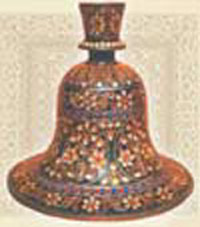 |
The perennial desire of man for search of beauty is amply reflected through these exhibits. Period or conditions pose no bar or exception to the projection of one's own personality. The cosmetics, jewelry , wealth and decorative items have found much favour from society since times immemorial. These invaluable pieces capture the moods, modes and movements of the Indian society during the last about two thousand years and represent different regions of the country. This small unit also speaks of some novel experiments and new techniques of presentation. From the infancy Bharat Kala Bhavan has been acquiringr are and beautiful |
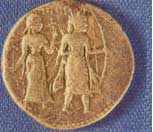 |
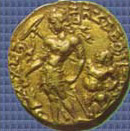 |
Bharat Kala Bhavan has a sizeable collections of coins from the earliest times to our own days with nearly an unbroken continuity including nearly 550 gold coins of different kings. Ofthese a few rare, unique and |
The Mughal emperors were great patrons of art, culture , painting, architecture, textile, calligraphy, gem-cutting, metal work, literature, dance and music" Their hobby inspired the craftsmen form all over India, Persia and Europe leading to emergence of a new art form created out of their fusion. The Mughals had a special liking for jades. They used this hard and
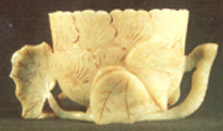 |
other semi-precious stones for different purposes like archer's ring, wine cups, dagger's hilt, opium cup and huqqa spouts as seen here. Since jade was imported from Central Asia, it was considered a costly commodity and articles made thereof were inscribed and handled with care. ]ahangir's inscribed |
wine and opium cups and archer's ring are some of the best examples of the Museum. ]ahagirwas also interested in collecting articles of his ancestor Ulug Beg. One of the inscribed jade cup originally belonged to this king.
The Mughals were lovers of nature too and this aspect is amply exhibited in the wine and opium cups carved with leaves and animal and bird headed dagger hilts. The carvings on them are delicate, refined and exquisite. Mughal artists also excelled themselves in crystal carvings.
Bharat Kala Bhavan acquired a few extremely rare royal inscribed gems which were once used by the Mughal emperors who were very particular about the quality and size of the gem and their special interest was in brillianted-spinels imported form Kabul. Two such inscribed spinels are in the Museum bearing the names of Akbar, Jahangir, Shahjahan and Aurangzeb in typical Mughal calligraphy. During the medieval
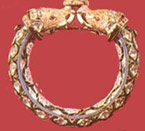 |
period the art of enamelling received special encouragement from the royal houses as well as from the commoners, In the Court of Shahjahan the master enameller was called 'Huriarmand'. The technique of this craft was mainly 'Champleve'. Delhi, Jaipur, Lucknow, Banaras and Pratapgarh of Rajasthan were the main centres where quality enamelling was done. |